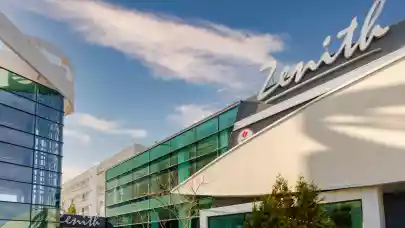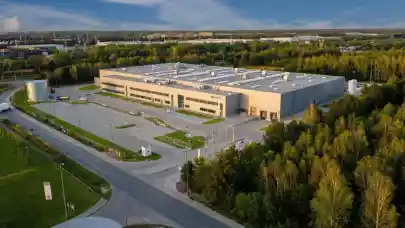
The financing panel at CEE Property Forum 2025, chaired by Dorota Wysokińska-Kuzdra, Senior Partner and Head of Corporate Finance & Living Services CEE at Colliers, offered a sharp look at how lenders and investors are navigating a more complex capital environment. Rather than revisiting familiar challenges, the discussion focused on the practical shifts reshaping funding strategies across CEE — from the rising cost of debt and the search for liquidity to the evolving role of bonds, banks, and alternative capital sources.
Opening the discussion, Maarten Otte, Head of Investor Relations at CTP, shared the company’s remarkable success in bond issuance, underscoring the importance of funding diversification. “This year, we managed to raise €1.6 billion in the bond market by staying focused on a balanced funding mix,” Otte explained. “However, regardless of market conditions, it is crucial to diversify sources—relying solely on bonds can be risky, especially when the market becomes volatile. Our strategy is underpinned by a solid credit rating and a commitment to maintaining scale, which provides both resilience and attractively trading bonds for investors.”
Addressing the stability and resilience of the region's banking sector, Dieter Knittel, Head of CEE at pbb Deutsche Pfandbriefbank, highlighted the distinct dynamics of Central and Eastern Europe compared to other markets. “We have watched banks in CEE weather strong economic headwinds without the aggressive exposures seen elsewhere,” Knittel stated. “Interest rates have certainly risen, making financing more costly, but the CE markets maintained stability thanks to prudent lending and sound fundamentals. Unlike the dramatic corrections witnessed in the US and parts of Western Europe, here we saw only moderate valuation adjustments and a continued appetite for new deals.”
Hannes Wimmer, Managing Director, Loan Capital Markets at Erste Group Bank AG, offered a perspective on the influence of defence and infrastructure spending on real estate during turbulent times. “Once state and EU funds flow into defence programs, we will see expanded demand for research, assembly, and warehousing, which inevitably benefits the logistics and industrial asset classes,” Wimmer commented. “Our industry adapts quickly. We have tailored our banking structures not only to meet the needs of core real estate segments but also to support emerging asset classes now vital for Europe’s strategic security and resilience.”
Turning to diversification, Gábor Pető, Capital Markets Director for Futureal Group, described how changing market liquidity is guiding investment decisions. “The post-pandemic climate has pushed us to think beyond traditional office markets,” Pető observed. “We actively seek liquidity in residential and industrial sectors, and are building out an energy platform that has already begun to attract significant interest from international partners. While our DNA is rooted in real estate development, evolving market conditions demand we stay nimble and seek new avenues for growth.”
On the subject of investment styles, Florian Nowotny, CFO at Indotek Group, outlined the company’s long-term, value-add approach: “As an opportunistic investor, our priority is to identify assets where we can drive income improvements and reposition them for future growth,” Nowotny said. “We always analyse if there are opportunities stemming from underperformance that our asset management can correct, taking a measured view rather than betting on market timing alone. Yield compression may factor into some deals, but sustainable value is built on operational enhancements and a clear understanding of asset potential.”
Rounding out the panel, Marius Perșenea, Chief Operating Officer of IULIUS Company, reflected on the normalisation of funding conditions and changing deal sizes: “After a decade of unusual market conditions and negative interest rates, we are finally seeing a return to ‘normal’ in financing—something that benefits both lenders and borrowers,” Perșenea remarked. “Today, financing tickets is larger and more aligned with the realities of current asset values, fostering a marketplace that is not only more competitive but also better structured for sustainable growth. This shift is critical as we look ahead to an era marked by increased development pipelines and the need for agility amidst geopolitical uncertainties.”
In closing, the panellists shared a cautiously optimistic outlook for 2026, noting the broadening of asset classes, increased local and international liquidity, and new opportunities across the region. The session underscored the vital role of creative financing strategies and a firm commitment to operational excellence as the sector continues to evolve.



